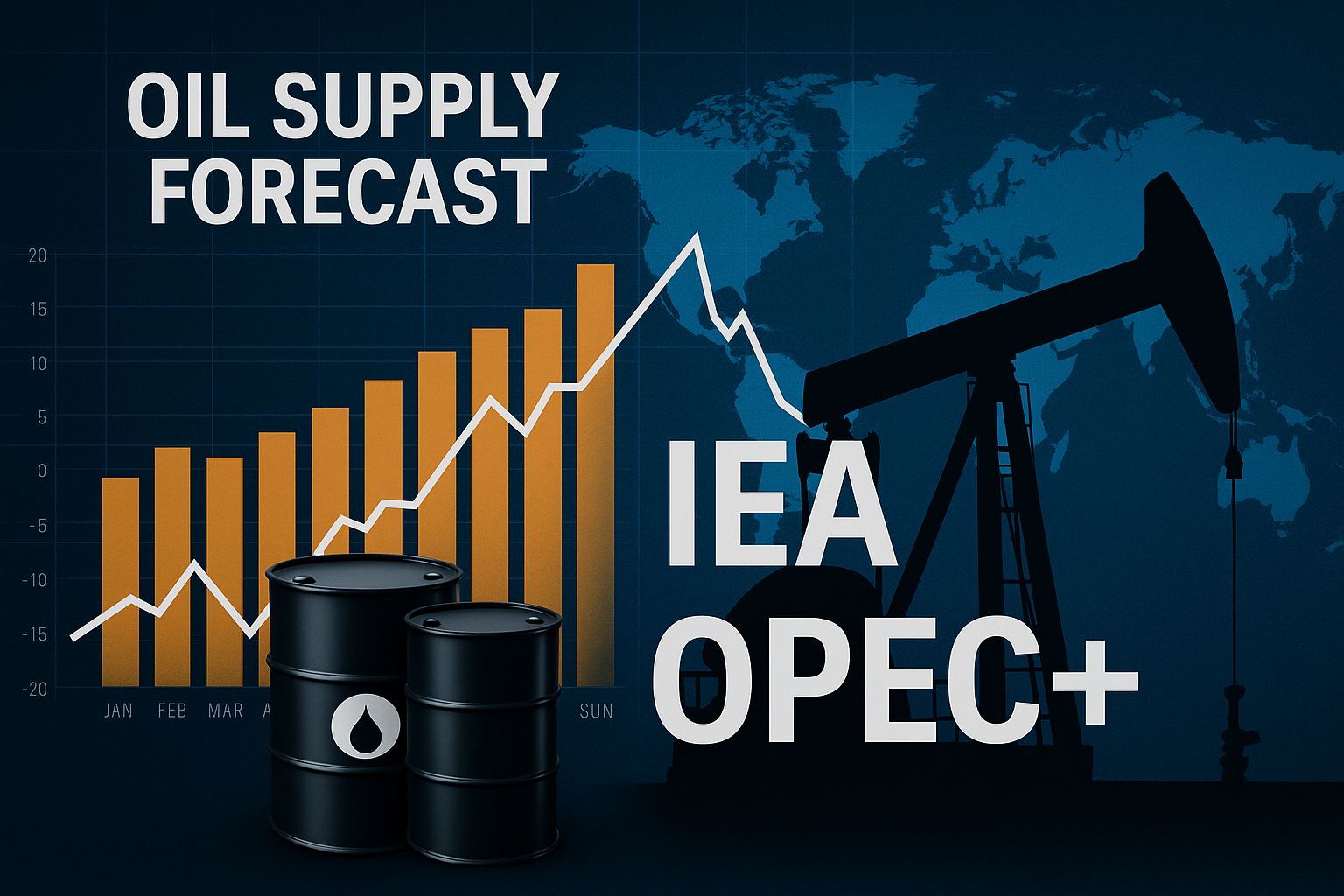IEA Raises 2025 Oil Supply Forecast as OPEC+ Stir Market Waters
By Tredu.com • 10/14/2025
Tredu

Introduction
In a sharp move, the IEA raises its 2025 oil supply forecast as OPEC+ and other producers keep up the pressure on output. The upward revision, coupled with a trimmed demand outlook, intensifies concerns over a global oil surplus and renewed volatility in energy markets.
Supply Surge: The Revised Forecast
The International Energy Agency now expects global oil supply growth of 3.0 million barrels per day (bpd) in 2025 (up from 2.7 million bpd prior) and 2.4 million bpd in 2026.
Non-OPEC producers, including the U.S., Canada, Brazil, and Guyana, are contributing significantly, while OPEC+ members accelerate the unwinding of prior production cuts.
Demand Outlook: Sluggish Growth
At the same time, the IEA trimmed its demand growth forecast for 2025 to 710,000 bpd (down by 30,000 bpd), citing macro headwinds, slower industrial momentum, and energy transition pressures.
Growth for 2026 is also expected to hover near the same pace, far below historical norms, creating a structural mismatch between supply and demand.
Market Reaction & Price Pressure
Oil prices tumbled in response. Brent futures slid over 2 percent, hitting a five-month low, while WTI also dropped sharply.
The driver: market participants growing wary of an expanding surplus, weak demand tailwinds, and macro risk, including growing U.S.–China trade tensions.
The IEA sees a potential surplus of up to 4 million bpd in 2026, raising questions about inventories, storage, and price support levels.
Structural Implications & Risks
Inventory and Storage Strain
Excess supply leans heavily on available storage. Oil “on water” (tankers at sea) and global crude stocks may pile higher, exacerbating downward price pressure.
Production Discipline & Strategic Moves
To stabilize markets, OPEC+ may adjust strategy, either slowing output growth or introducing new cuts. Failure to do so could trigger sharper price declines.
Transition & Demand Uncertainty
Energy transition trends, EV adoption, efficiency gains, regulatory shifts, raise risk that demand growth stays suppressed.
Geopolitical & Supply Disruptions
Supply side remains vulnerable: sanctions, conflict zones, logistics, infrastructure disruptions could offset some of the downside risk.
What Comes Next? Outlook & Strategy
Key Indicators to Watch
- Quarterly IEA or OPEC reports revising forecasts
- Inventory builds, particularly in OECD nations
- Actions from OPEC+ on production quotas
- Macro indicators: growth, inflation, trade conditions
Strategic Positioning
Energy investors should tread carefully. Hedged exposure, select upstream plays, or storage arbitrage strategies might help. Overexposure to long crude without buffer may be risky.
Broader Sector Dynamics
This new outlook reinforces pressure on energy equities, especially those tied to conventional oil production. It may tilt capital flows more toward service, midstream, or transition energy plays.
Conclusion
With the IEA raising its 2025 oil supply forecast in light of OPEC+ output hikes, the stage is set for elevated volatility and downward pressure on prices. The tension between surging supply and weak demand growth underscores a looming global oil surplus, forcing markets and policymakers to reckon with a precarious balance.

How to Trade Like a Pro
Unlock the secrets of professional trading with our comprehensive guide. Discover proven strategies, risk management techniques, and market insights that will help you navigate the financial markets confidently and successfully.


